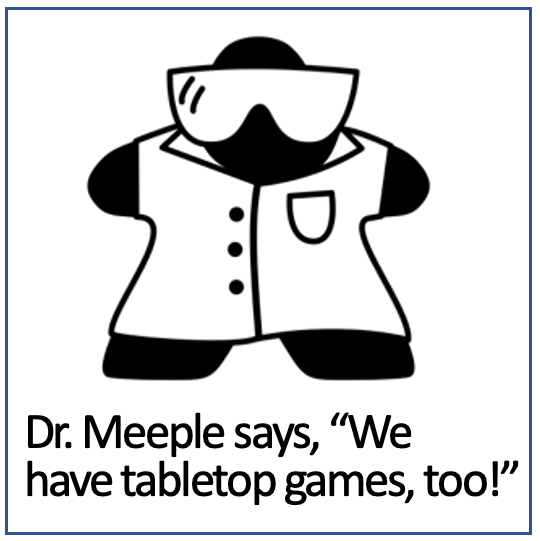This post is by Rafael Bisso-Machado, Ph.D. who is a scientist, studying Human population genetics in Brazil. He works at Universidade Federal do Rio Grande do Sul, which is the State University of a state called Rio Grande Do Sul in the southern part of Brazil. You can find it on the map here. Dr. Bisso-Machado is also a video game player and he is planning to participate in our Science Game Jam, coming up in 2023.
Introduction: What is Scientific Dissemination?
The process of explaining scientific discoveries to the public is called Scientific Dissemination. In grade school and high school we take science classes, but after we graduate, how do we learn science? Scientists all around the world are discovering new things every day, but how do grown-ups learn about these new things? This is an important question because so much new science is discovered every day and also because this new science affects our lives a lot. Satellites, Vaccines, Robots, Medicine, and Software are things we need and use and they get updated by new discoveries every day.
As you know, newspapers, magazines, museum displays, movies and books are types of media that are used to disseminate scientific knowledge to the public. Video Games are also a type of media that can convey information, and this is why we tell you about video games at the Science Game Center. Our friend Dr. Bisso-Machado loves genetics and has studied different populations of Humans over many centuries by studying their DNA and how it changed over all those years. Dr. Bisso-Machado also loves games and wrote this blog post (and review article) about many games that teach us about his favorite topics: biology, genetics, and history.
+_+_+_+_+_+_+_+_+_+_+_+_
Video Games as a Learning Tool
Videogames are interactive media. Unlike passive media, where users only receive information, in video games, the user must interact actively. How many gamers are there in the world? There are approximately 3 billion gamers (40% of the global population). This shows that video games are a significant cultural activity.
Unlike learning in a typical classroom context, video games involve gamers in the constant construction of knowledge, encouraging gamers to learn through trial and error, penalizing the gamer for wrong decisions, and rewarding the right ones. Example: In Dawn of Man (see below) if the gamer allows the population to grow too much without having enough resources (food, clothes, tools), the gamer will most likely see individuals dying of starvation, hypothermia, and being attacked by wolves in winter. That way, the gamer can learn some lessons in demography, natural selection, and cultural evolution. Dawn of Man, Ancestor – The Humankind Odyssey, and Far Cry Primal are examples of video games that can be used as learning tools.
Dawn of Man is a videogame with the objective to grow and develop a European settlement of Homo sapiens over time, from the Paleolithic to the Iron Age. Players control a small group of Paleolithic humans (made up of men and women, from children to young adults and the elderly). The game focuses on survival strategies, and combat is secondary. Dawn of Man reflects a relatively accurate simulation of reality based on scientific knowledge about Paleolithic Homo sapiens in Europe. The game starts with a small group of individuals. Population growth occurs by both birth and migration, thus counterbalancing the deleterious effect that genetic inbreeding would have on a real population. Game’s positive points: Dawn of Man at first glance appears to be a typical survival/city builder/RTS (real-time strategy) game, but the level of scientific precision it represents makes it an excellent tool for scientific dissemination to the general public, and even a learning method for students to, for example, learn and explore concepts related to European Paleolithic hunter-gatherers. Game’s negative points: Throughout the game, there is no division of tasks and no emergence of specialist individuals. Also, the game is titled “Dawn of Man” and takes place in Europe, but if it were to live up to its name, it should take place in Africa. This game was reviewed recently on a scientific article (Bisso-Machado, R. (2021) , Dawn of man: Videogames as a tool for science dissemination. Am J Phys Anthropol, 176: 726-727).
Ancestors – The Humankind Odyssey is a survival game where players control a member of a primate clan and have to manage the character's health by eating, drinking, and sleeping. As players make new discoveries, primates become smarter and more capable, and new abilities such as using leaves to make beds and medicinal plants to heal themselves are unlocked. If the player character dies, the players will take control of another clan member. If all clan members die, the bloodline dies, and players need to restart the game. The player's objective is to ensure the survival of the primate clan as it slowly evolves and becomes a new species. When the character is sleeping, players can unlock new skills by developing the neural system, which works like a skill tree. These skills, such as the ability to use both hands and stand, lead evolution along several paths. As individuals breed, unlocked skills are passed on to future generations. This game was reviewed recently in a scientific article (Pelissero, A.J. (2021), Ancestors: A creative and immersive game based on human evolution. Am J Phys Anthropol, 176: 540-541).
Far Cry Primal is set in 10,000 BCE during the late Upper Paleolithic and early Mesolithic periods in Europe. Survival is a daily challenge as tribes come into conflict with each other and with nature. The characters speak a fictional language with defined syntax and structure. It is based on the reconstruction of the Proto-Indo-European language, which is the theorized common ancestor of most modern European languages and some languages in Asia and the Middle East. The linguists that worked on this game constructed three dialects - Wenja, Udam, and Izila - one for each of the three tribes presented.
Citizen science
Interaction between scientists and players. Gamers are helping scientists solve science problems by playing online games designed by scientists. That way, video games can become a form of citizen science. Foldit and Planet Hunters are examples of video games that are being used for citizen science.
Foldit – solve puzzles for science. Foldit is an online protein folding puzzle game. Through this game, gamers solved in 3 weeks what researchers had been working on for 13 years: gamers have solved the structure of an enzyme that causes an AIDS-like disease in monkeys. The book A framework for scientific discoveries through videogames delves into the use of Foldit as a tool for scientific discoveries.
Planet Hunters TESS. With this game, gamers have already found several planets that had gone unnoticed by professional astronomers and that could potentially support life.
Games created by scientists for science dissemination/teaching
Currently, the number of games created by scientists with the aim of promoting scientific dissemination and science teaching is increasing. Below, we will see some studios that develop these games.
Catlilli Games – where stem education comes to play. This studio explores how games can enhance learning. They are developing a research program to determine the impact of games on learning. Can games be used as content delivery tools in the classroom? This studio created a game called Operation: Ebola! It was tested in an immunology course. The more students played the game, the greater their gain in pre/post-test knowledge scores. These results were published as a scientific article (Addy, T.M., et al. (2018) Integrating a Serious Game Into Case-Based Learning. Simulation & Gaming, 49(4), 378–400).
Molecular Jig Games. This studio aims to increase the general knowledge of molecules like proteins by creating games that take place in the molecular world and making them available and appealing to a wide audience. Melanie Stegman (the same person who organizes the Science Game Center, conducted research on learning with students playing a game called Immune Attack. In this game, players navigate a Microbot through a 3D environment of blood vessels, connective tissue and the surface of a white blood cell. Immune Attack was the object of one of the first controlled quantitative studies of games and learning. It showed evidence of increased learning in cell and molecular biology (Stegman M. (2014). Immune attack players perform better on a test of cellular immunology and self confidence than their classmates who play a control video game. Faraday discussions, 169, 403–423).
Wick Works This studio created the game Crescent Loom. It is a game about creating life. In this game, players link bones, muscles and neurons into a biologically realistic underwater creature. The studio aims to make the fundamentals of neurobiology accessible to everyone by giving gamers the tools to build the brains and bodies of underwater creatures.
Videogames created/produced or in collaboration with Native Americans.
Videogames created by Native Americans are on the rise. They are an opportunity for these peoples to express themselves and communicate with a wider audience using interactive media.
Never Alone (Kisima Ingitchuna) is the first game developed in collaboration with the Iñupiat, a native people of Alaska. It was the result of a partnership between Ishmael Hope, storyteller of Iñupiaq and Tlingit heritage, and the Cook Tribal Council. The player controls a young Iñupiat girl and an arctic fox as they set out to find the source of the eternal blizzard that threatens the survival of everything they've ever known. As the player progresses through the stages, the player is rewarded with collectible "cultural insights" from Iñupiat elders.
Conclusion
Games reflect the gradual progression of learning that takes place in each individual's life. Just like in real life, where learning becomes increasingly complex and necessary for survival, the basic structure of video games inherently directs the player to this learning progress so that he can “survive” in the game. Examples shown here demonstrate that video games, when properly used, can expose people to scientific concepts, leading them to learn more about these concepts (from a trusted source), thus acting as an important means of scientific dissemination.








